Part 4 - Building your Stress Toolkit
We suggest that you complete the activities over a few days to get the most benefit from them.
In this part, you will:
- Work on your best self scale
- Look at the effect stress has on you and the people around you
- Discover ways to manage your stress
My best self scale
Hopefully you have been working on your best self scale and getting to know how you feel at the different points on the scale.
Please don’t worry if you are finding it difficult to write about your feelings. We will look at different ways you can make your own scale, so that it works for you.
Where are you on the scale today?
To begin with, stop and take a moment to think about where you are on your best self scale, right now.
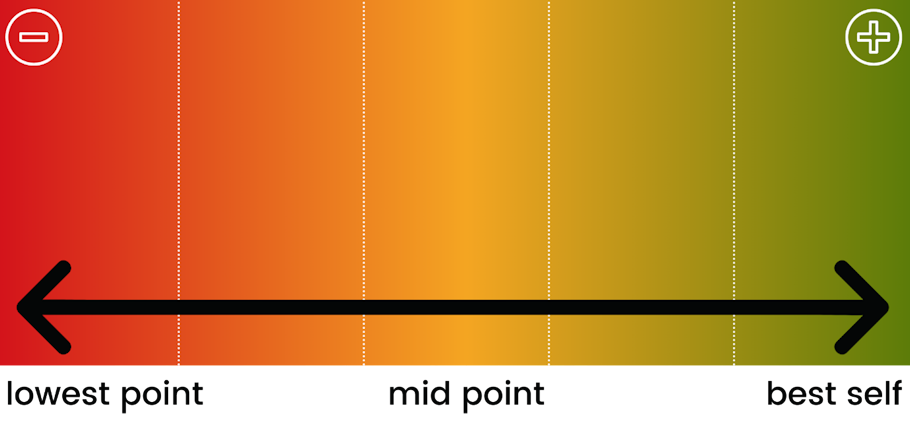
- Has it changed throughout the day?
- Has it got worse or has it got better?
- If you are feeling anything less than your best self, can you think of something that will help you to move towards your best self?
It’s possible to experience a whole range of points on the scale in just one day!
How can this happen?

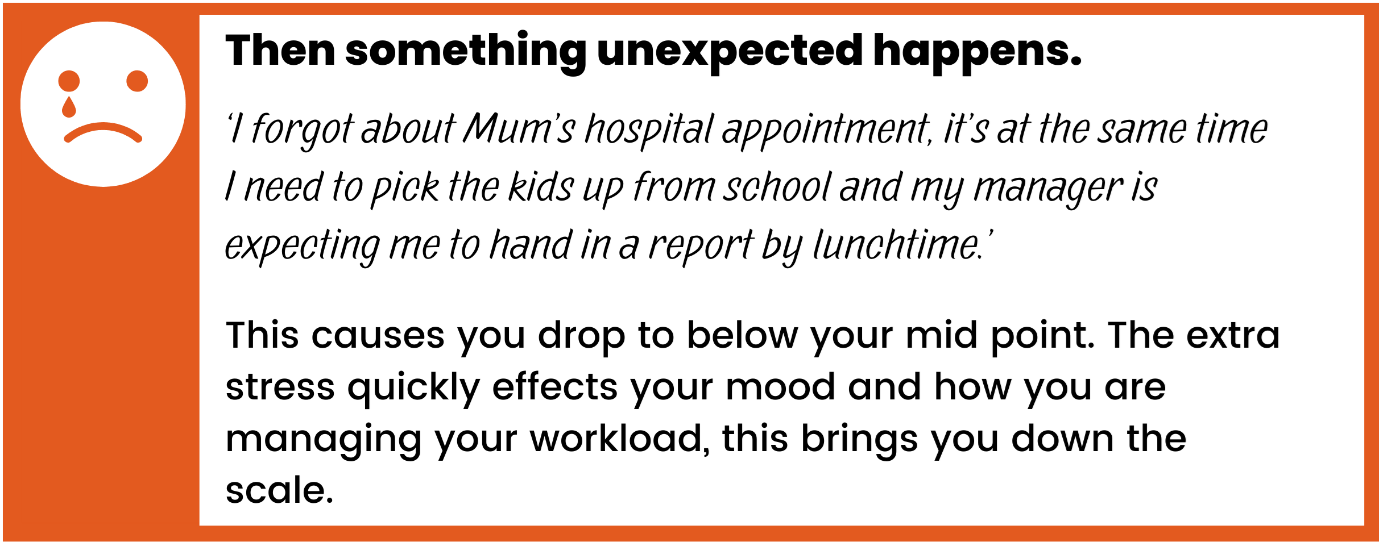
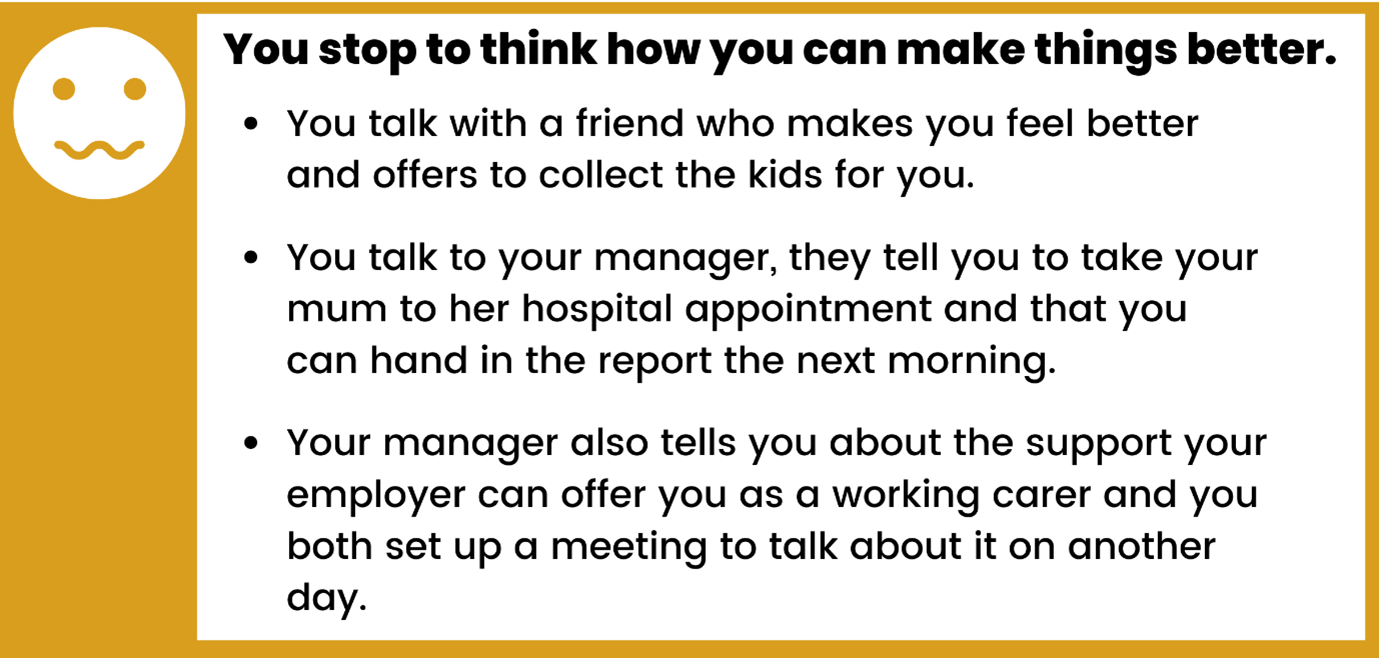

Try using different ways to describe your scale
Using words to describe yourself at the different points on your scale may be difficult. This could be because you find it easier to understand or recognise your thoughts and feelings through pictures, sounds or even smells.
Using different materials, that you feel more comfortable with, can help you to get to know yourself through your best self scale in a way that suits you.
For example:
You could try using some of these ideas to represent how you are feeling in the different points on your scale:
- draw or paint your own pictures
- use images you find on the internet
- use emojis
- take your own photographs
- cut pictures, colours and textures out of old magazines to make a collage
- use music or songs
- use sounds from nature
- collect sounds around you
- the weather
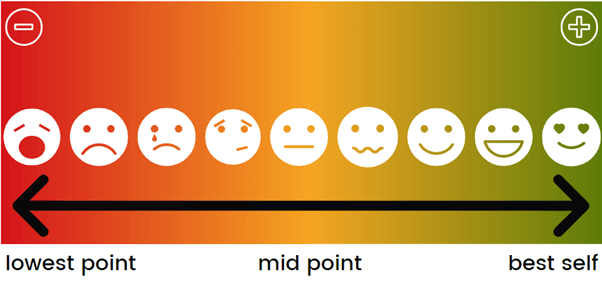
It really is up to you, the more you personalise your best self scale, the easier it will be to use. You will also find it easier to recognise when you are slipping down the scale, to understand what is happening and what you need to do to bring yourself back towards your best self.
Activity
Time to try it out… (You can spend as little or as long as you like on this activity!)
Try to make yourself a scale using some of the suggestions above, or try mixing different ideas together. You do not have to share your scale with anyone and it does not matter what it looks like, just do what feels right for you.
There is space in your personal log to try this out (pages 9 to 12), or you could use paper and a pen or even use a mobile device, if you have one.
How stress affects you and the people around you
So far, we have looked at the different types of stress we face in our lives and how our feelings can vary from day to day and even from one minute to the next.
Our thoughts, feelings and behaviours can be affected by what is happening around us.
We do not always have control over what is happening around us and we cannot control all of life’s challenges.
What can you do to feel less stressed during life’s challenges?
You may not be able to predict all of life’s challenges, but you can probably list a number of things that make you feel stressed or have made you feel stressed in the past.
Let’s look at how you respond to stress…
Take a look at the list of stressors you made in part 2, feel free to add more to the list or start a new list if you like.
If you are staring a new list, make a note of all the things that make you feel stressed.
There is space to do this in your personal log (pages 13 to 16), or you can write your list down using a piece of paper and a pen.
Here are some examples of the things that other carers have said causes stress:
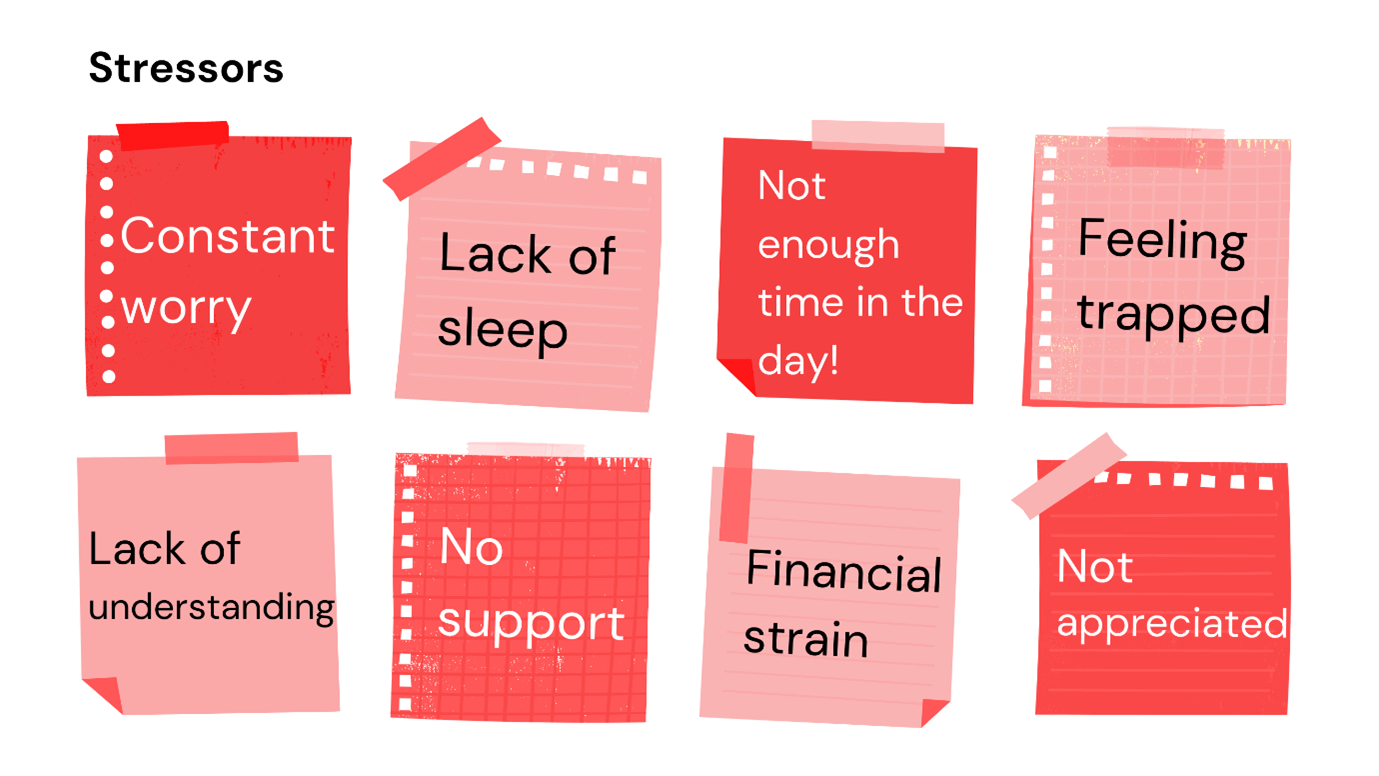
You will probably recognise some of these examples, they may even be on your list and perhaps you have been able to list a few more.
It is important to identify what it is that causes you stress. It can help you to work out what steps you need to take to lessen the effect of the stress and to bring you back up the scale towards your best self, these steps will help to improve your wellbeing.
What happens to me when I am stressed?
Looking at your list of stressors, think about how you respond to each stressor when it is happening…
Make a note of the following:
- How do you feel?
- What are you thinking about?
- How does your body feel?
These are your internal responses to stress. Can you pinpoint where you might be on your scale?
How does my response to stress affect what is happening around me?
Now look at each stressor and make a note of what happens next:
- How do you behave?
- How do other people react to you?
- What is the result of your response?
These are the external responses to stress.
Now look at what you have written, can you see how your internal responses can cause a chain of events that:
- can make you behave or act in ways that you do not want to;
- affect the people around you;
- can cause you even more, unnecessary, stress?
If you know how a situation is going to play out, you can prepare yourself for when it happens. You may not be able to stop the stressor from happening, or have any control over the stressor, but you can manage and change how you respond to it.
How can I manage my response to stress?
You have spent some time thinking about the things that cause you stress and you have identified what happens when you get stressed. Now it is time to think about what you can do about it.
If we do not find ways to relieve stress, the stress can build up to a point that is damaging to us (toxic stress).
We can avoid reaching dangerous stress levels by using resources around us that can get rid of the pressure building inside us.
Introducing the stress bucket!
Watch the stress bucket video, which explains the effects of building stress…
You probably already have some coping strategies that you use when you are stressed; we will call these ‘your tools’. There are tools all around us and we just need to find the right tool for the job!
What are ‘your tools’?
Our tools are what we can use to release the pressure of stress when we need to.
- Can you think of some useful tools that could help you manage the level of stress in your stress bucket?
- What tools are you already using?
- Can you think of some new ones?
To help you, make a list of all your tools. There is space to do this in your personal logbook (page 17) or you can make your list on a spare piece of paper.

Here are some examples:
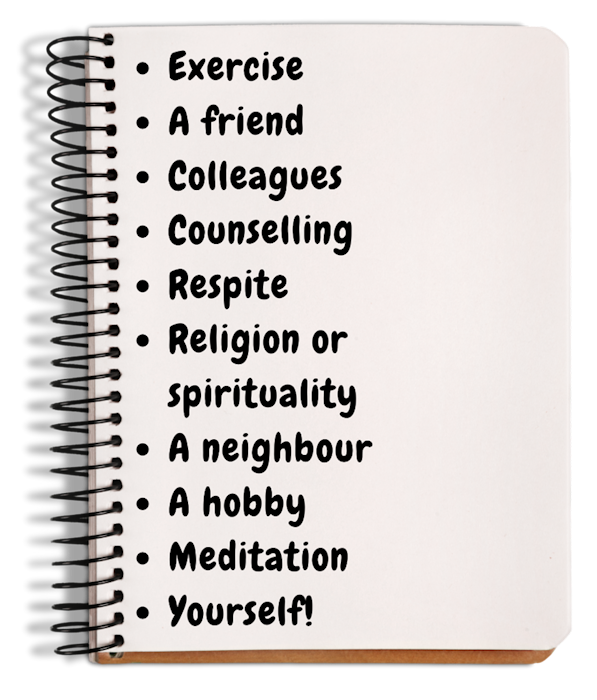
The list is endless; it can change and grow with each new challenge you face.
As you journey through life, you will overcome new and difficult challenges. Each time you do this, you will be able to use what you have learned from your past experiences to overcome those challenges and you will gain more tools along the way.
Being aware of the tools you have, in your toolkit, helps you to be prepared for the things that cause you stress and interrupt your fight or flight response.
Use what works for you.
You are your own tool! You can choose how you respond to stress and what tools to use.
Part 4 summary
In this part, you have:
- Worked on your best self scale and looked at the different ways you can make your scale
- Looked at the effect stress has on you and the people around you
- Discover how using ‘tools’ can help you manage your stress
Before we go on to the final part of the course, you may want to take a few days to work on getting to know your best self scale a bit better.
You may also want to take a bit more time to think about your tools.
Also, do not forget your goals. How are you getting on with those? Are you managing to keep to them?
Part 4 complete, move on to part 5.
